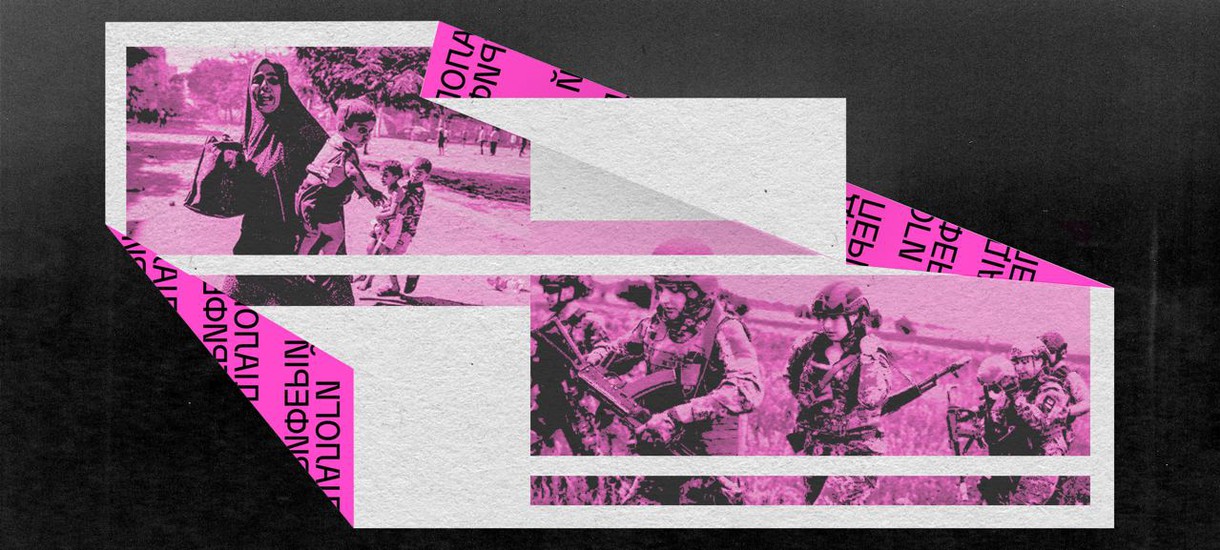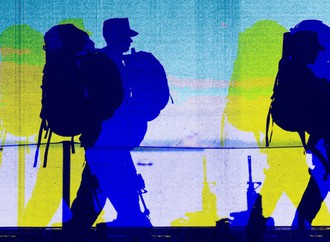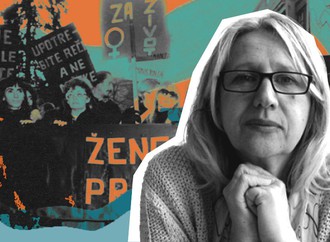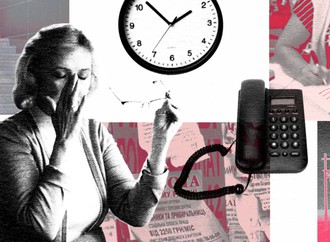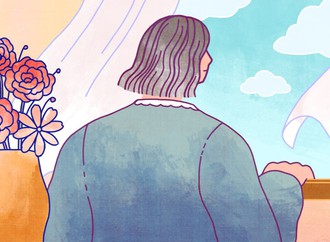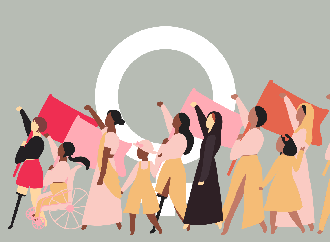Women around the world continue to suffer from injustice and inequality. War deepens not only existing problems of sexualized violence and burden of reproduction but also creates new challenges: displacement, unemployment, or the need to protect one's community. During wartime, women and girls become both victims of aggression, soldiers, activists, refugees, and single mothers. In other words, their position changes, not only in places where hostilities are ongoing, such as Ukraine or the Gaza Strip but also in neighboring countries, including Poland. As part of a thematic discussion at the Feuerbach 11 Dialogues of the Peripheries conference, we discussed the connection between such women's war experiences — from everyday life to structural and historical processes.
Three gender researchers participated in the discussion. Marta Havryshko focuses on gender-based violence during the Second World War and the Holocaust, as well as during the Russian-Ukrainian war. Weronika Grzebalska, a sociologist and President of the Polish Gender Studies Association, works on social and institutional transformations in Poland and Central and Eastern Europe, focusing on militarism, national security, and right-wing politics. Anwar Mhajne is an assistant professor of political science at Stonehill College (USA), specializing in international relations and comparative politics with a focus on gender, religion, and Middle Eastern politics. Her research focuses on how Islamic beliefs and institutions in the Middle East structure Muslim women’s political presence, agencies, and opportunities.
The discussion was moderated by Olenka Gu, sociologist and editor of the Commons journal.
(In)visible: The gender price of war for women in Ukraine
Marta Havryshko highlighted the situation regarding women in Ukraine after the start of the full-scale invasion. The notion of an invisible, unnoticed frontline indicates the gender-based problems faced by women at the battlefront, which, unfortunately, do not receive much attention in the mass media and at the military command level.
Currently, the women's share of military personnel in Ukraine is one of the largest among the world's armed forces, at approximately 15%. More than 43,000 women serve in the Armed Forces of Ukraine, which has increased by 40% since 2021. Russia's full-scale invasion encouraged women to sacrifice the privilege of not being subject to military service and to join the armed forces voluntarily.
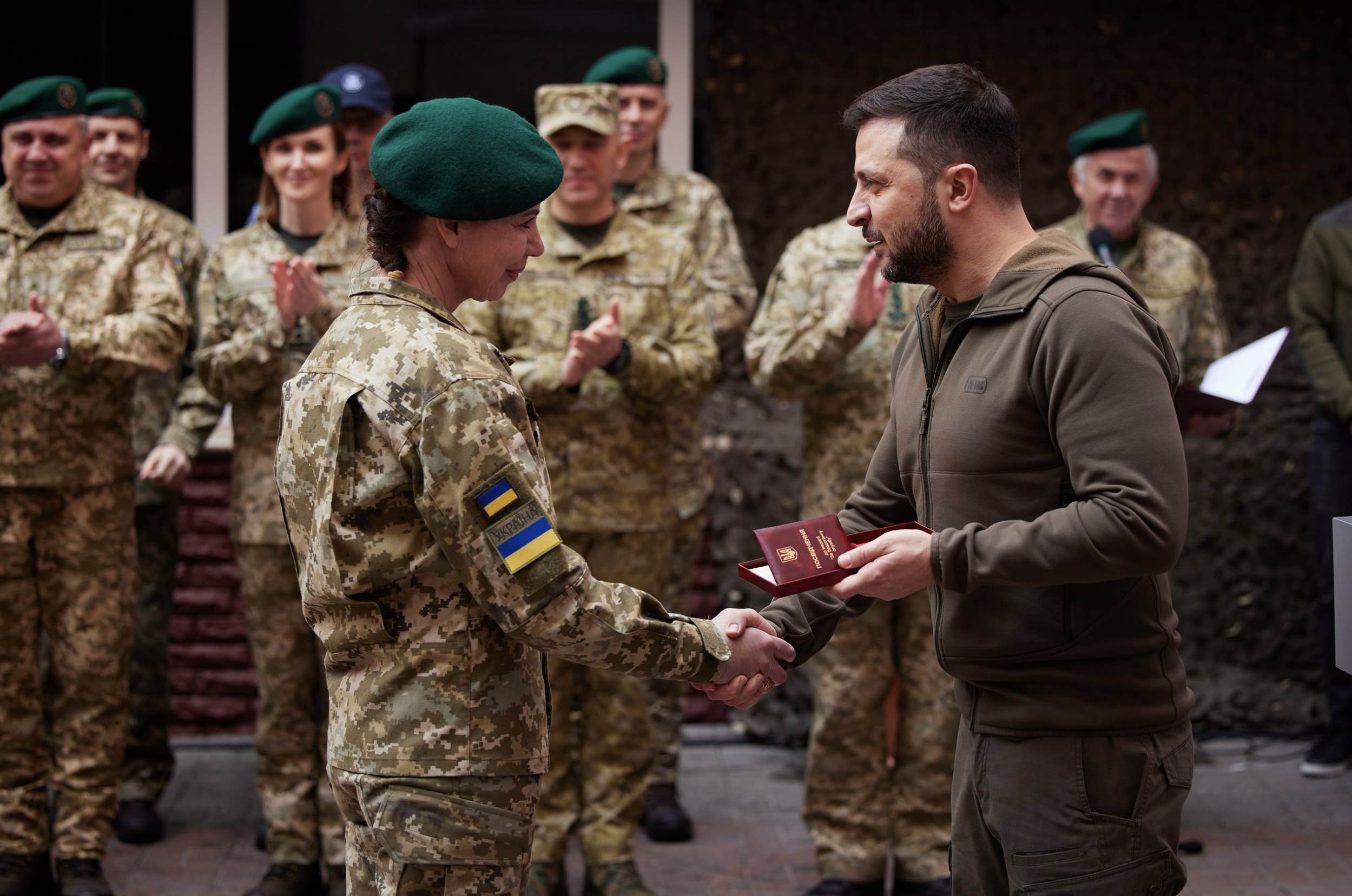
A defender of the state border of Ukraine receives an award from Volodymyr Zelenskyi, April 30, 2022. Photo: president.gov.ua
The most apparent price of war for women who have chosen to join the army is separation from children and other relatives, as well as the threat of death or injury. According to the Ministry of Defence's data provided a year ago, more than one hundred female soldiers have been killed during the full-scale invasion, yet such losses have also occurred before. The women's veterans' movement seeks to highlight the sacrifices made by women in the military and to ensure that they are not forgotten by society. Together with feminist organizations, this movement is also working on improving conditions for women in the military.
Women in the Armed Forces also face challenges that are invisible to the public: sexual violence and gender discrimination in the military. This is not only a problem in Ukraine: for instance, two years ago, a twenty-year-old American servicewoman, Vanessa Guillen, was murdered as a victim of sexual violence. Following her murder, the US Army developed and implemented a procedure for reporting cases of sexual violence and harassment in the army.
There is no such mechanism in Ukraine. When Valeriia Sikal and Olha Derkach decided to speak publicly on the cases of sexual violence in the army, they received support from feminist organizations but no justice. According to data from the Invisible Battalion, one in ten women in the military is sexually harassed. Although since the start of the full-scale invasion, public discussions of such cases in Ukraine have ceased.
Another problem caused by the over-masculinity of the military sector is discrimination against LGBTQ+ people in the military. Between 24 February and 31 October 2022, the «Nash Svit» Centre's monitoring network documented 74 cases of human rights violations based on sexual orientation and gender identity, 60 of which were in some way related to hostilities.
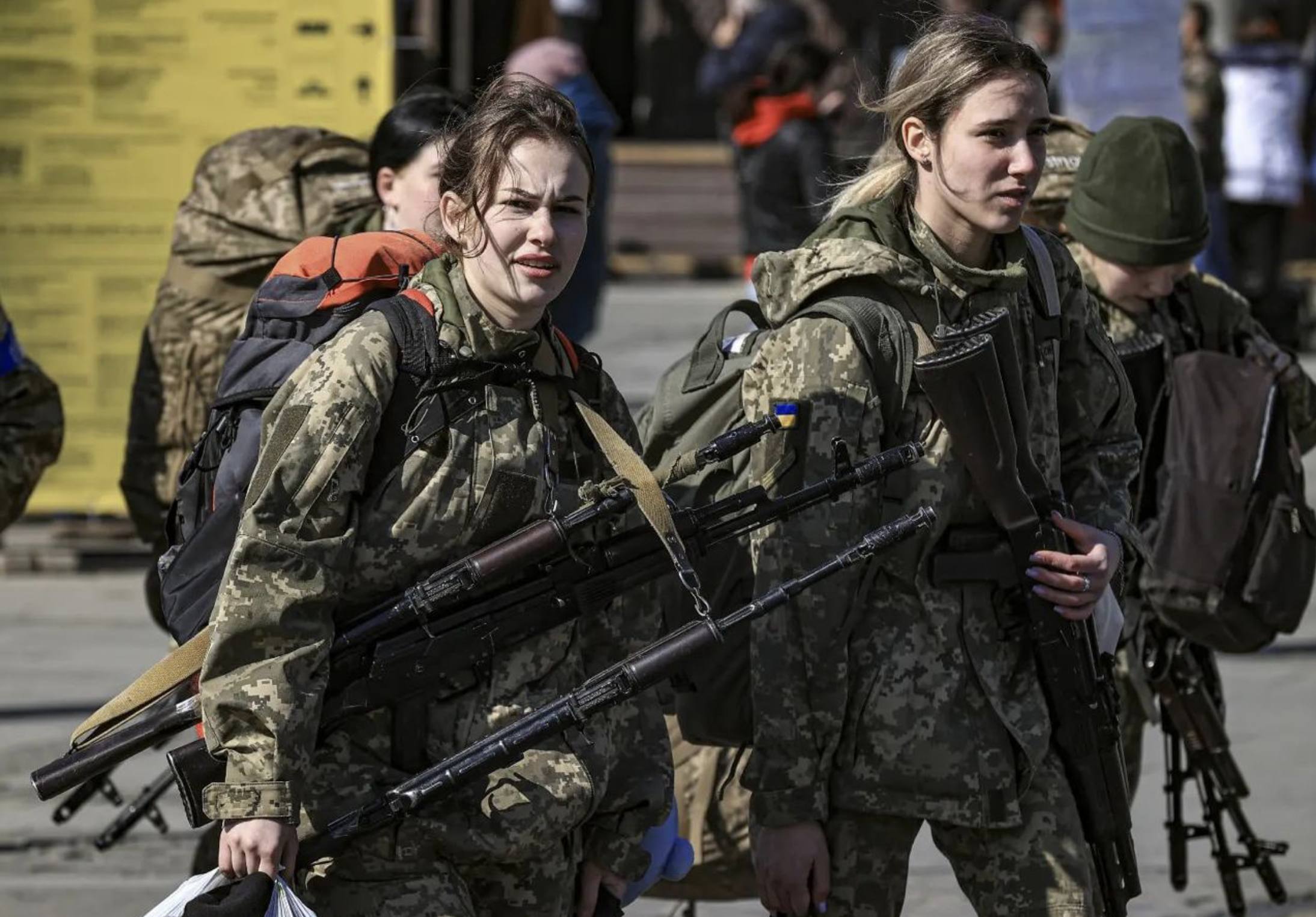
Ukrainian servicewomen. Illustrative photo: Metin Aktaş
What is the Ministry of Defence's response to cases of discrimination and harassment? If you look closely at the Ministry's website, you can easily find materials on military-patriotic education, but there are no guidelines for dealing with sexual violence. Instead, feminist organizations, such as the Ukrainian Women Lawyers Association «JurFem», offer such guidelines for women in the military.
Another significant aspect of gender-related problems involves the experiences that civilian women in the frontline zone and occupied territories of Ukraine have had. In particular, these are experiences of sexual violence. According to the Office of the Prosecutor General, 235 such cases are registered, although it should be understood that these are only people who dared report it. Thousands of women and men choose to remain silent for various reasons such as stigmatisation, culture of violence, re-traumatisation, etc. It is especially difficult to talk about such violations under occupation and in imprisonment, where people are subject to acts of torture. As a result, civilian victims of sexual violence do not receive the necessary help and may even face victim-blaming — being blamed for "inappropriate behavior" that "provoked" the violence or being accused of treason and "providing entertainment for Russian soldiers."
Conservative groups, particularly in Germany, propagate the myth that both Ukrainians and Russians commit sexual crimes regularly. To address this narrative, firstly, it is essential to understand that sexual violence in war can have different connotations. On the one hand, there is a type of opportunistic rape when men want to assert their masculinity and strength yet try to hide the crime for fear of punishment. On the other hand, in the Russian army, commanders do not prevent cases of violence, and there is a total denial of their existence at the official level, not to mention the distinction of those units that commit sexual or other war crimes. There is a significant amount of evidence to suggest that sexual violence by the Russian military is an instrument of war.
On the other hand, it is unacceptable to ignore the cases of sexual violence that have been recorded on the Ukrainian side, even if their number is significantly lower. The Ukrainian authorities should not deny this problem but should acknowledge it, recognize it, and deal with it, as we cannot tolerate sexual violence.
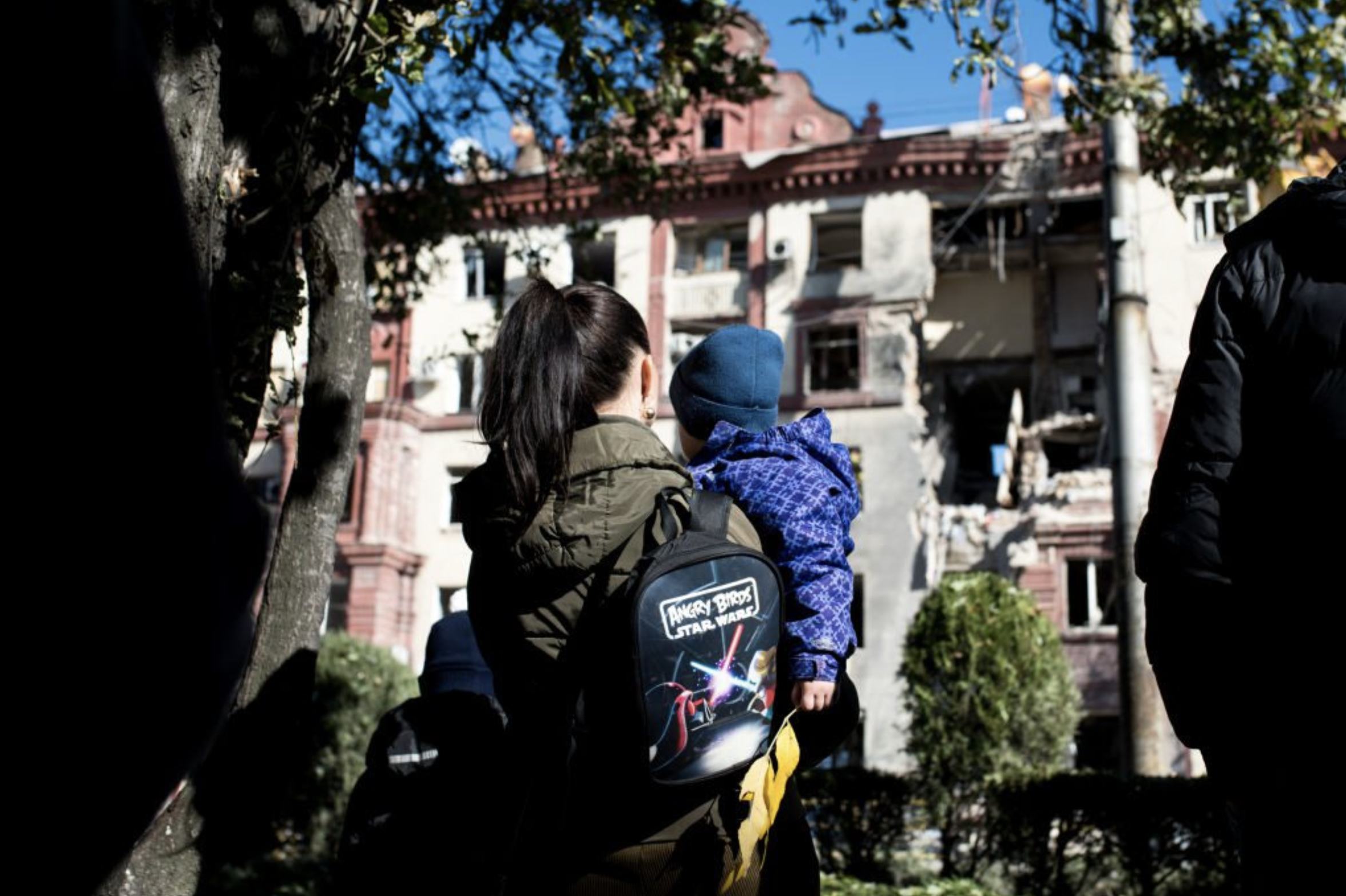
A woman holds a child near a residential building damaged by rocket fire, Zaporizhzhia, October 18, 2023. Photo: Elena Tita / Global Images Ukraine via Getty Images
Beyond war-related violence, we should not forget about other things. We should not build a hierarchy of victims when, for example, victims of Russian aggression receive empathetic support from society while others, such as victims of domestic violence, do not. The National Police has recorded a significant decrease in cases of domestic violence compared to the data from the beginning of 2021-2022. However, these data cannot be relied upon, given the prevalent denial and silencing of the problem of domestic violence in the media, as well as the large number of refugees and ongoing occupation of part of Ukraine. Due to the fear of being judged and rejected or being accused of spreading Russian propaganda, women may also keep silent about cases of violence by military men. This happened in the case of Inna, an IDP who had fled to Lviv because of being violated by her husband, a soldier.
Women who provide care for other people also deserve special mention in the context of the price of war. For example, those are women who have become or will become mothers during the war, who have to give birth in inappropriate conditions, and take care of children in extremely difficult circumstances. These are also women who care for their husbands who return from war wounded or disabled. Such couples are often presented in a romantic light. Still, women are forced to sacrifice their self-fulfillment, work, and resources solely because the quality of public services provided to veterans is insufficient or of poor quality.
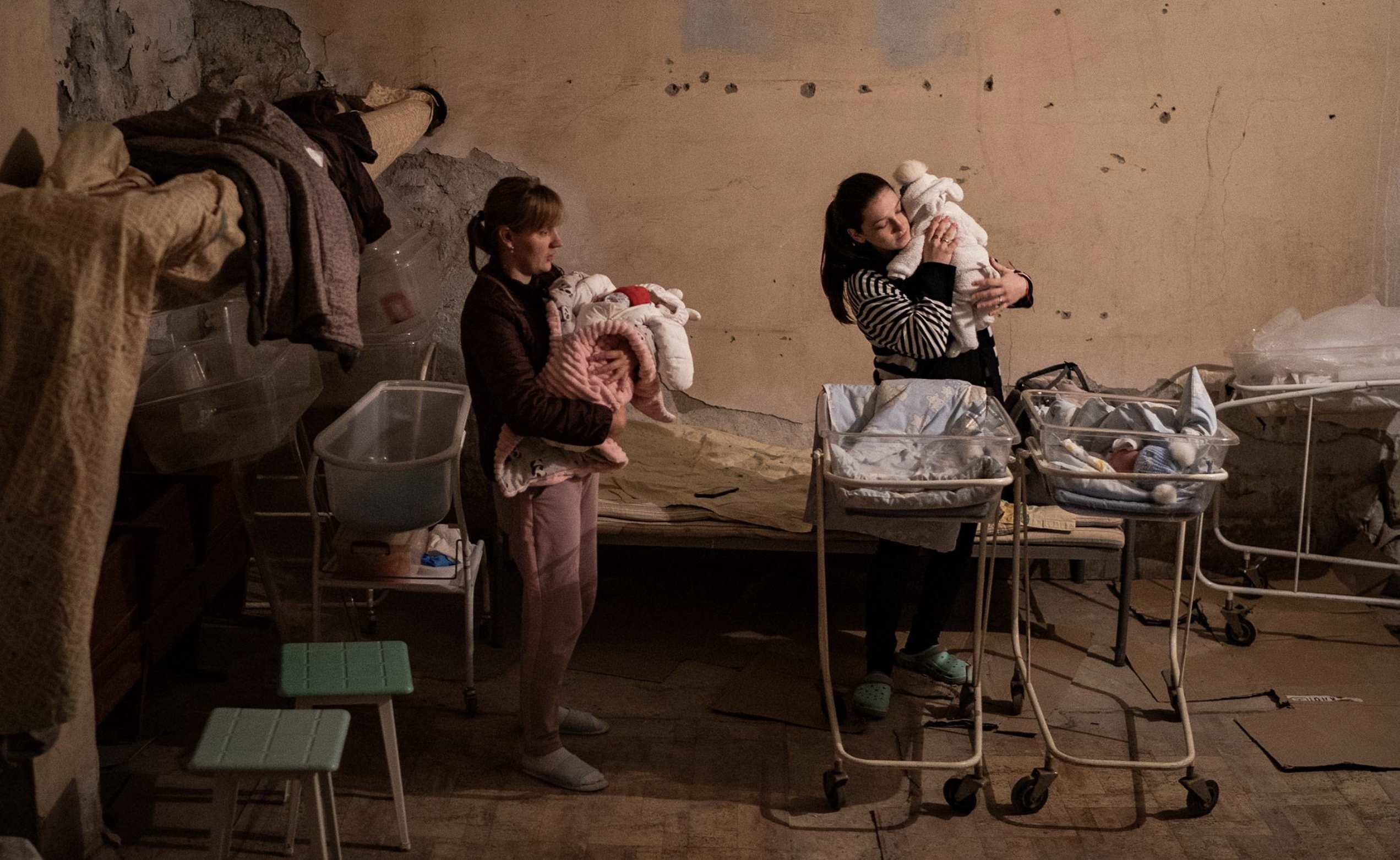
Mothers with newborns during an air raid in the basement of a hospital in Odesa, March 17, 2022. Photo: Salwan Georges / The Washington Post via Getty Images
Due to increased spending on military needs and economic dependence on the support of Western partners, those groups of the population living on state budget payments — retirees, people with disabilities, and educators — are suffering. The working conditions of the latter have only worsened since the start of the full-scale invasion. At the same time, the salaries of employees in the educational field (most of whom are women) are often at a minimum rate.
"Before the war, my salary at the National Academy of Sciences was 50 euros," Marta Havryshko shared her experience. "Now I receive 1 euro, and recently, I was forced to sign a document stating that I agree to a salary reduction".
These all are hidden consequences of the war, which are mostly not the subject of public discussion.
It is necessary to discuss the problems that women and representatives of vulnerable groups face as a result of Russia's armed aggression and to bring these cases into the public discourse. This is the only way we can understand the actual price of war, which is still not sufficiently visible to both the country and the international community.
The Russian invasion, women in the Polish army, and the idea of comprehensive defense
Polish researcher Weronika Grzebalska followed up on the topic of women's presence in the army and spoke about how the Russian-Ukrainian war has affected the army in Poland. In her presentation, the researcher described how, throughout history, women have been involved in the country's defense. She also offered some ideas on how to build a better, more feminist, more social democratic defense policy in Poland and central Europe.
Women were not allowed to serve in the army during the Polish People's Republic. However, after 1989, changes began to be implemented as part of a policy of homogenization with Western security institutions such as NATO and the EU. In the late 1980s, civilian women who worked in the military were integrated into the army as servicewomen. In the 1990s, military academies were opened to women, which led to the need to provide adequate facilities and design uniforms. In the early 2000s, all positions in the army were opened to women, including combat positions and special forces. Regulations supporting gender integration were also adopted, such as the right to maternity leave and basic measures to deal with discrimination and harassment.
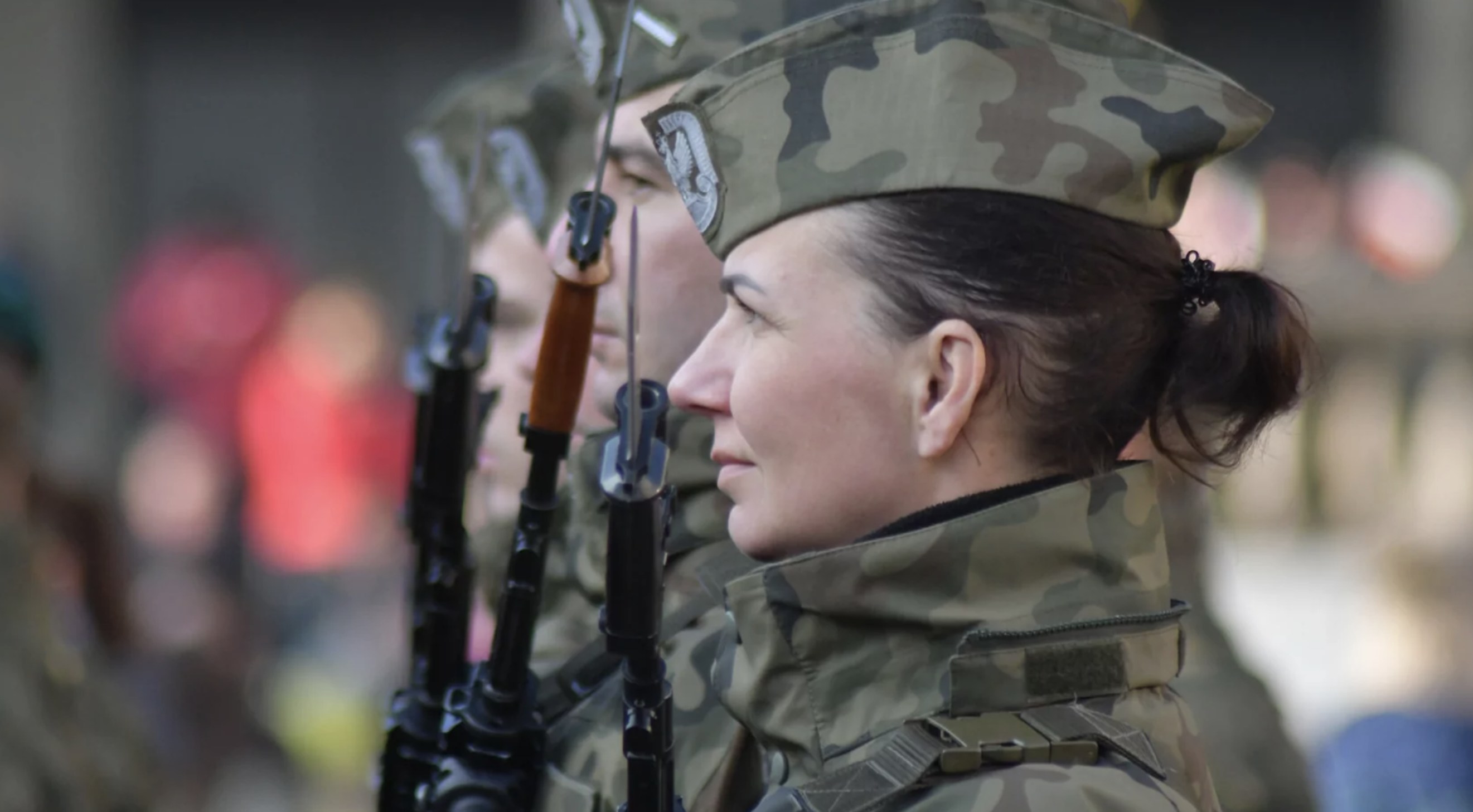
Women in the army of Poland. Photo: Karolina Adamska / East News
Despite these changes, the share of women in the armed forces was not high, with less than 5 percent serving. The absence of many women in the military hindered the further promotion of changes from within. However, the war in Ukraine became a wake-up call for Poland, leading to large-scale defense reforms. One of these reforms was the formation of territorial defense forces, which involves the model of citizen soldiers who have the opportunity to combine their professional and personal lives more flexibly.
This new approach to military service, combined with other forms of participation in the country's defense, has significantly increased the number of women involved. In a little less than six years, the percentage of women in the armed forces has doubled, reaching around 10% in the professional service and 20% in the territorial defense forces. These figures also indicate that the territorial defense model is more favorable to women's active participation.
Notably, the gains made in Poland regarding women's involvement in defense are not without their weaknesses. Women in the Polish armed forces still face discrimination, harassment, and other problems. Nevertheless, the war in Ukraine has raised discussions about defense and security, in particular among feminists. Polish feminism had not previously focused on these topics at all, but the Russian invasion has brought them into the focus of public attention.
Weronika Grzebalska suggests that the existing model of defense should be completely revised in order to involve more feminist movements to deal with defense-related matters as well as to involve women in the defense of the country in general. She believes that unequal positions of power cause problems in the interaction between feminists and military institutions in times of crisis. In this model, the military, as representatives of a "male" institution, come to rescue and establish their power over helpless civilians who self-organize during a crisis. In contrast, there is a defense paradigm called comprehensive defense, which may be implemented in various ways. This paradigm is currently quite popular and is being implemented in the Nordic and Baltic countries. In Central Europe, this idea is present in strategic documents but has not yet been implemented in practice.
"The idea of a comprehensive defense is that the defense of a country rests on four main pillars. One of them is the military, but there are three other civilian components: state institutions, private enterprises, and civil society, with all the citizens together," explains Weronika.
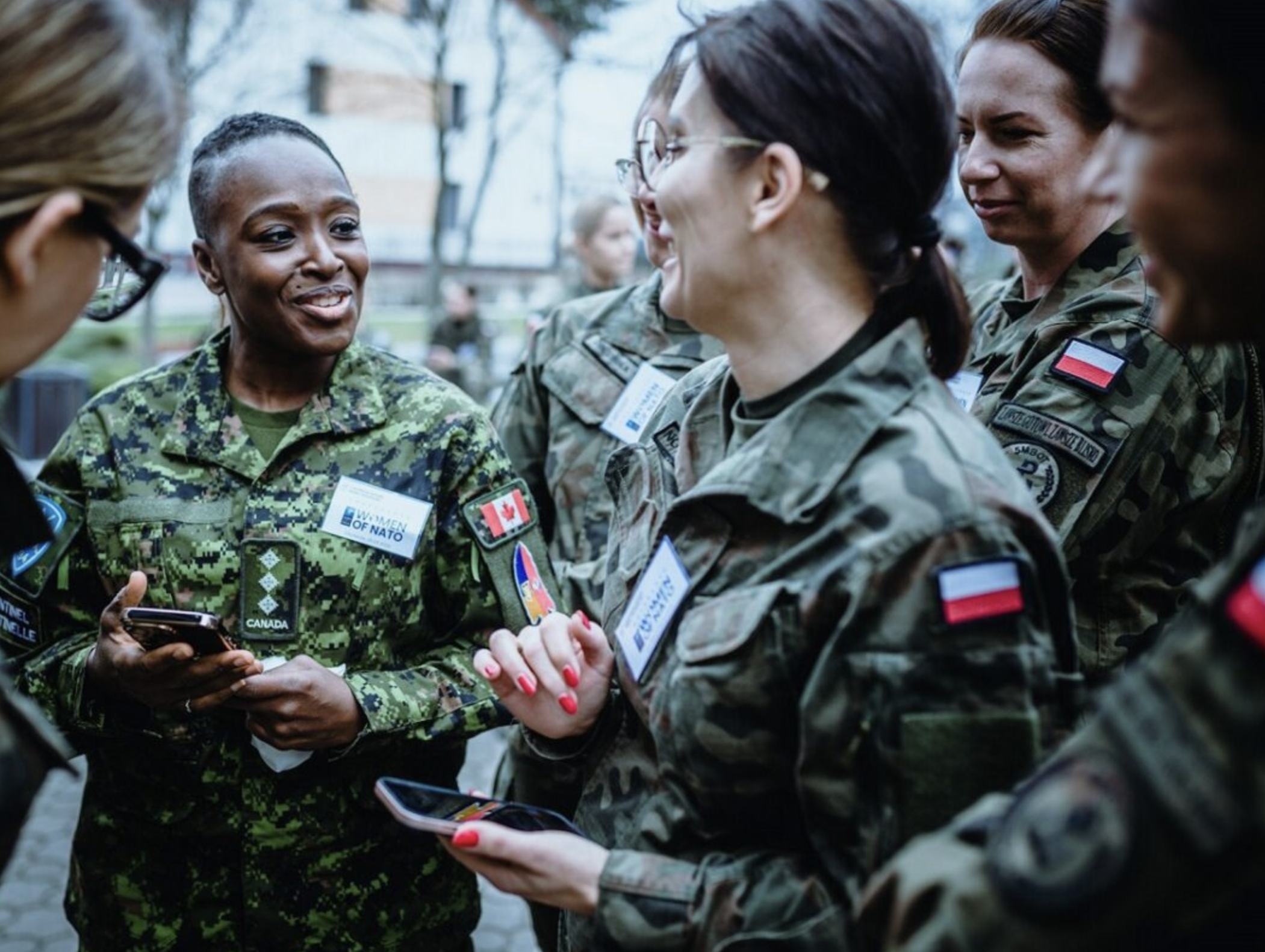
NATO Women's Conference, Ciechanów, Poland, 25 March 2023. Photo: DWOT
In this model, the military is only one of the components of defense, and the other components play an equally important role, as does the interaction between all of them.
"I hope that feminist influence would result in building a system that is not focused on the military but develops all the components of defense. If all four spheres cooperate, the military will be able to focus on combat operations. At the same time, the other components will support the state's stability in a crisis in all other areas," the researcher explains.
In such circumstances, it is possible to involve women in performing other functions where they can fulfill themselves, protect themselves, and have the appropriate resources to do so instead of waiting for defenders to come. Similar practices can be found in the history of Finland, Estonia, and, to some extent, Poland during the interwar period. Back then, there were women's armed groups all over the country that trained civilian women, giving them the skills and knowledge to protect themselves and their households.
Weronika believes that without insisting on a more comprehensive defense format, we will see a revival of the old patriarchal narrative stating that women ultimately need men's protection. That is why feminists should be active agents in the development of the national defense.
However, the researcher notes that convincing the left to support this idea in Poland is tough. They would rather pay more taxes and leave matters of defense to the military than act independently. We may see that those who are least willing to engage in national defense are those who declare themselves to be left-wing voters. So, although left-wing activists and voters hold more progressive values, this does not necessarily encourage civilians to take on more responsibility in the defense sector. Weronika Grzebalska believes that in such circumstances, it is a challenging but important task for the independent left-wing in Poland to engage social democrats and feminists in the discussion regarding defense matters.
On the position of women in Gaza and the Jordanian West Bank during war and occupation
The third member of the discussion discussed the situation that women face during a war between very unequal opponents. Anwar Mhajne is one of the 20% of Israeli citizens who are Palestinian by birth. It is important to note that the researcher condemns both the attack by Hamas extremists that took place in Israel on October 7 and the deaths of civilians in Gaza as a result of military operations by the Israeli army.
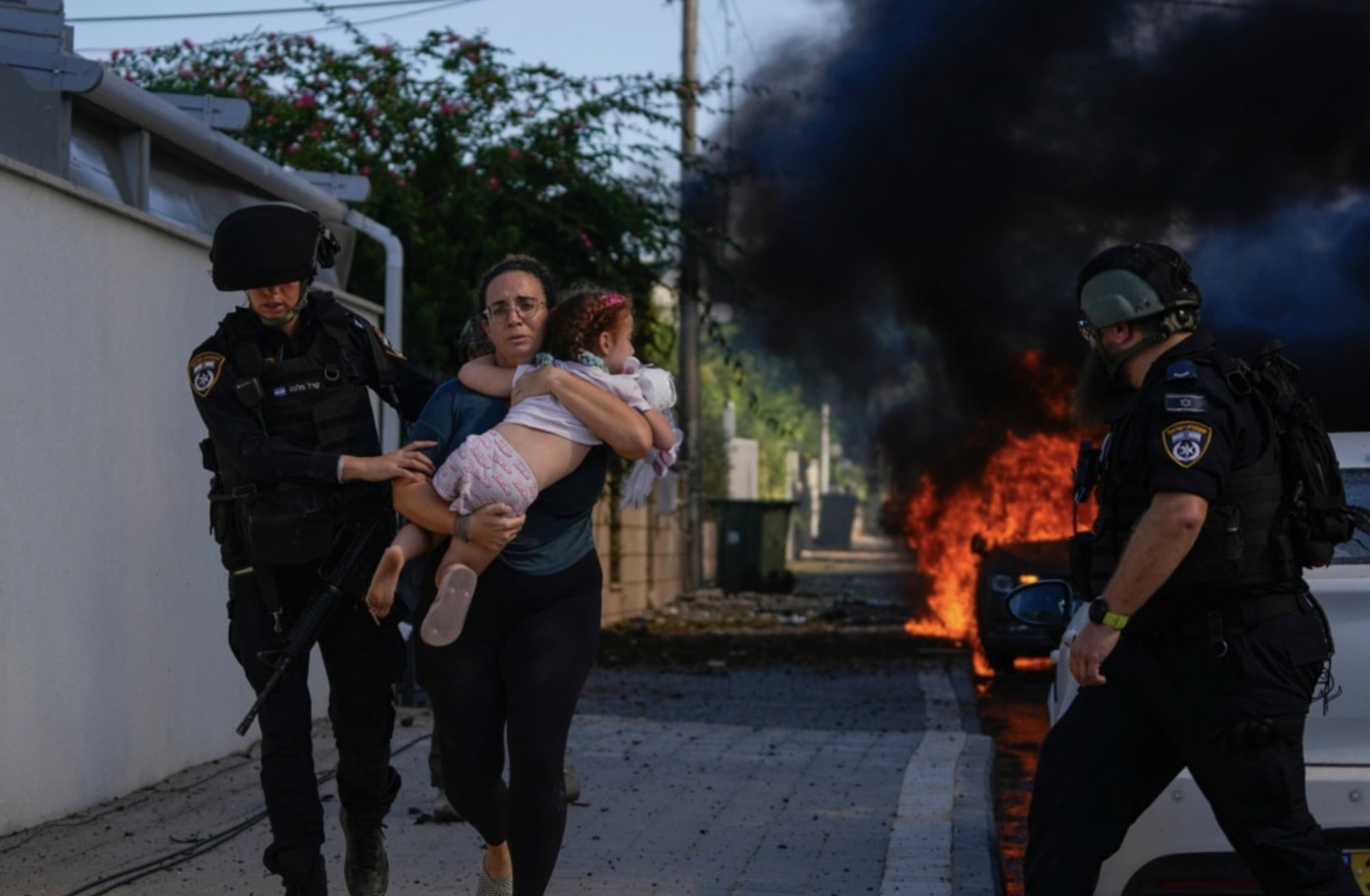
Police help evacuate a woman with a child from the site of a missile strike in Ashkelon, Israel, October 7, 2023. Photo: AP Photo / Tsafrir Abayov
Anwar emphasizes that the experience of Palestinians across various territories can differ significantly. Palestinians who are citizens of Israel have a relatively better position, but even they are in a very vulnerable situation. Some of them have been killed as a result of Hamas attacks, yet they are also targeted as a minority in Israel. In addition, the Palestinian minority in Israel has close ties with the population of Gaza and the West Bank and, therefore, painfully experiences the catastrophic consequences of Israel's military actions in these territories and often sympathizes with the national liberation movements of its inhabitants. During the discussion, the researcher focused on the situation of women in Gaza and the West Bank.
There are two main factors affecting the condition of Palestinian women in these territories: patriarchal practices existing in society and closely linked to the activity of religious groups and the occupation of the Jordanian West Bank. The governance of Hamas in Gaza, on the one hand, and the Palestine Liberation Organisation (PLO) in the West Bank, on the other, are two different experiences for women in these territories. Likewise, the level of international support and funding that flows to the West Bank is quite different from that of Gaza.
In addition to poverty, maternity, sexual violence, and gender discrimination, Palestinian women under occupation face a number of other problems, including the destruction of housing. Many families lose their homes and are unable to relocate to a safer place. The most catastrophic situation is undoubtedly in Gaza, where, according to UN estimates, about 60% of the housing stock has been damaged or destroyed, leaving about a million people homeless. However, the loss of homes does not occur only because of the war. There are demolition cases in Jerusalem and the West Bank due to the missing building license. Such licenses are complicated to obtain, especially in East Jerusalem. Furthermore, if a family member is accused of terrorism, or if a family member organizes an attack on Israelis, there is a policy of demolishing houses - regardless of whether the family knew about their relative's intentions or performance.
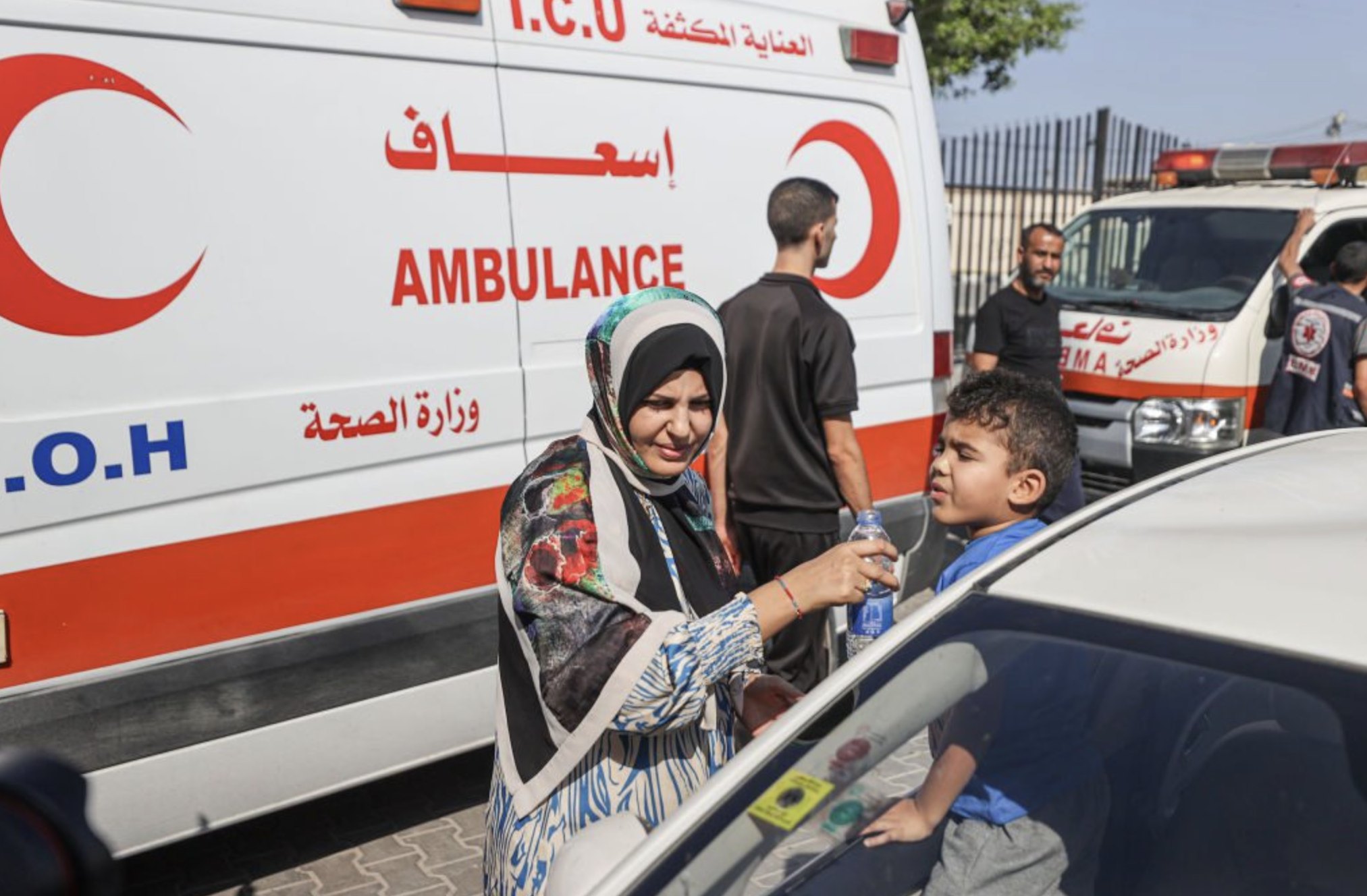
Palestinians with foreign passports wait to cross the border into Egypt at the Rafah border gate on November 1, 2023. Photo: Mustafa Hassona / Anadolu via Getty Images
Another problem is the limited mobility. According to the Palestinian Bureau of Statistics, in 2022, about 172 women were detained at security checkpoints, and 18 women were killed. As a result, they are forced to avoid crossing these checkpoints whenever possible. Israel's control over Palestinian mobility also affects access to medical care: some women give birth at checkpoints without being able to get to hospitals.
The PLO, or Palestinian Authority, governs the West Bank. It establishes laws that negatively affect the position of women. In addition to the difficulties associated with the occupation, patriarchal practices are pretty common. Women tend to stay at home and are less involved in salaried work, which leads to financial dependence on men. In the West Bank, the percentage of women who graduate from college is higher, but they do not enter the labor market after graduation. This also applies to Palestinian women in Israel and Gaza. Once educated, women get married and start families, sacrificing professional fulfillment. At the same time, the PLO considers itself a secular organization and actively cooperates with the UN and other international organizations.
Regarding the situation in Gaza, about half a million women and girls have been displaced during the two months of the war, and 60-70% of the more than 15,000 people killed (more than 20,000, according to other sources) are women and children. Anwar points out that for some time, she herself believed that the thesis about protecting women and children was problematic, as there were women among the PLO and the Popular Front for the Liberation of Palestine who had resorted to violence. It is known about women who participated in terrorist acts, and in such cases, it is difficult to talk about them as victims.
However, the researcher now struggles with the narrative that all Gazans are responsible for the Hamas attack on the seventh of October. Groups such as Hamas are extremely religious and do not involve women in combat, believing that women's role is to run the household, bear children, and deliver religious, patriarchal, and national identity to their children. Women are not involved in the political committee or the military wing of Hamas, which planned terrorist attacks in Israel. The thesis of collective responsibility is also undermined by the fact that there have been no elections in Gaza for 16 years, and about 50% of the population are children under 18 who are not even eligible to vote.
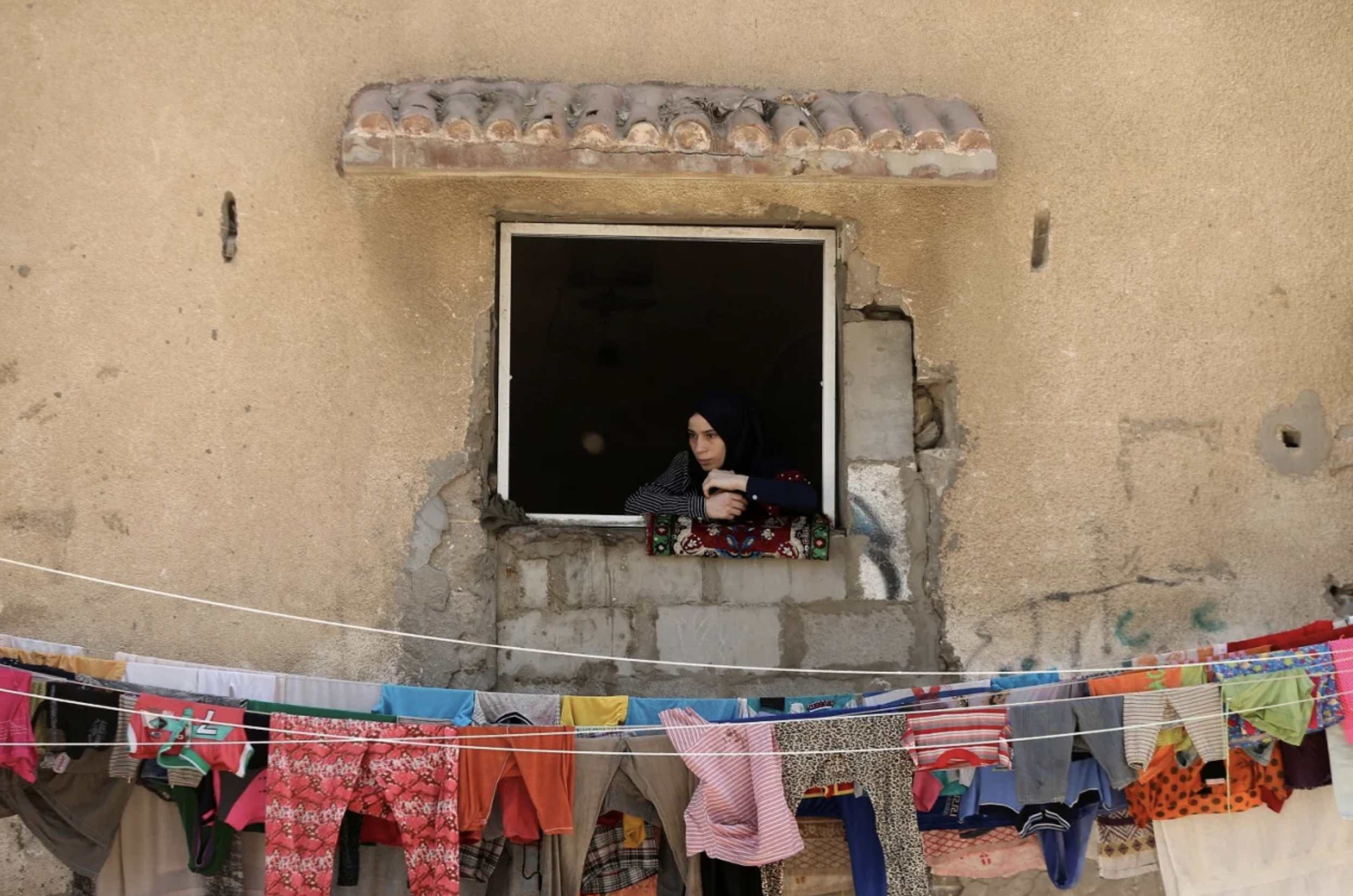
A woman in Gaza. Illustrative photo: Reuters / Mohammed Salem
The war has radically worsened the already difficult situation for women in the Gaza Strip. Among the displaced persons are widows who have to take care of their households on their own while facing a lack of water, basic sanitation, and medicine. They are entirely in charge of caring for their families, which is a heavy burden in a time of war. The lack of essential medication is also having direct consequences for women: there are numerous cases of women giving birth in hospitals undergoing cesarean sections without anesthesia. In the case of bleeding during childbirth, doctors cannot stop the bleeding, which can lead to the mother's death. Sometimes, doctors are forced to remove the uterus as this is the fastest way to stop the bleeding, although, under normal circumstances, there are other ways to save a woman. The UN estimates that at the moment, there are around 50,000 pregnant women in Gaza, and 5,000 of them are due to give birth within a month in harsh, dehumanizing conditions. So, in many ways, women in Gaza are in an extremely difficult situation that is significantly worse than in the West Bank.
Nevertheless, in the West Bank, more than 250 civilians were killed after two months of military action. About 13-14 communities were temporarily displaced, or between four hundred and a thousand people. Due to the militarization of Israeli society and the arming of settlers and civilians in general, life in the West Bank is becoming increasingly dangerous for Palestinians.
Anwar Mhajne emphasizes that among the Palestinians, there are both combatants and civil activists who are trying to improve their living conditions. There are also, for example, journalists: the foreign media does not have access to Gaza, so local journalists, most of whom are women, perform this function. Often, they risk their own lives trying to film what is happening. This is how the journalist Shireen Abu Akleh was killed, and Israel initially denied any involvement. Still, a year later, it was recognized that she was killed by an Israeli soldier. Women's participation in political life in Gaza and the West Bank is unequal: Gaza has only one female minister, while the West Bank and the Palestinian Authority have more women in political positions.
Diverse images of women represent Palestinian society. On the one hand, there is the example of Shaden Abu-Hijleh, who became an iconic activist and resisted militarisation. On the other hand, there is the example of Leila Khaled, who took part in hijackings in the 1960s and 1970s and was accused of terrorism. So, the experience of Palestinian women involved in resistance varies depending on their place of residence and attitude to the occupation.
***
At first glance, the experiences of women in Ukraine, Poland, or the Gaza Strip seem very different. However, they are all affected by new challenges caused by wars in their home countries or regions. In these circumstances, many women have taken on new roles as soldiers, residents of frontline areas, displaced persons, and victims of war. In these new roles, they continue to face increased inequality, prejudice, violence, and economic injustice.
Therefore, protecting victims of war, combating violence, harassment, and discrimination, building comprehensive defense strategies, and combating systemic economic inequality require public attention and concrete actions to improve the status of women together with the progressive development of society. The ability to address these issues undoubtedly depends on the current situation in a particular country. After all, there is a huge difference between the conditions of social struggle in a society when war occurs in a neighboring country and a society under attack. Similarly, the potential for combating gender inequality varies when the war covers the entire territory and when the war has a relatively stable front line. However, in all these cases, challenges faced by women, both "traditional" and war-related, must remain in the focus of public attention.
Women during the war: between defense of the country and lack of social security
